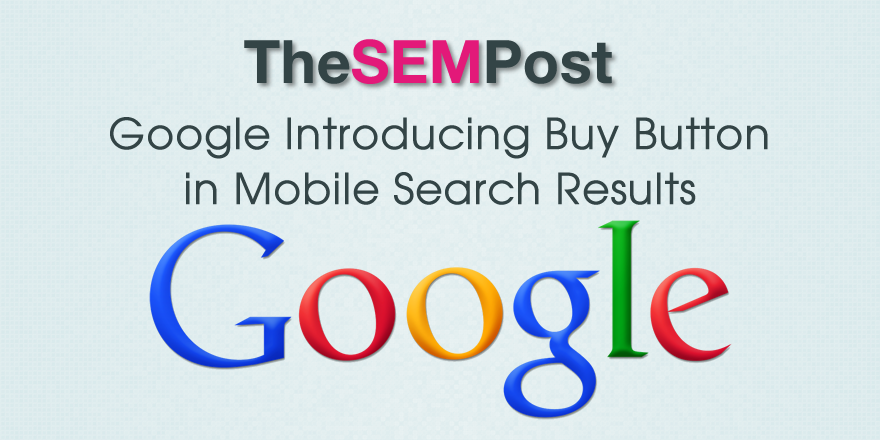 Google is stepping up their e-commerce offerings for advertisers with a new program that would see “Buy Now” buttons added to search results, with the entire transaction being hosted by Google, rather than the seller.
Google is stepping up their e-commerce offerings for advertisers with a new program that would see “Buy Now” buttons added to search results, with the entire transaction being hosted by Google, rather than the seller.
According to a report in the Wall Street Journal, the buy buttons will launch within the next few weeks in their Google search results.
These “Buy Now” buttons will only appear on mobile results and will often appear under a “Shop with Google” ad header, similar to what we have seen in Google’s current shopping ads that appear on both mobile and desktop.
The fact Google is targeting this ad program for mobile users makes a lot of sense when you consider many company’s purchasing processes for mobile users leaves many mobile users frustrated and end up not completing the sale. On some sites, purchasing from a mobile device is downright impossible. So it appears Google is looking to fill the gap for online purchasing on a mobile device.
Once user clicks the “Buy Now” button, they will be redirected to Google-hosted product landing page where they can complete the purchase, including customizing options such as sizing, colors and available shipping options. Then the customer completes the purchase through this page. But if you think Google is taking a percentage of the revenue, you’d be wrong.
Perhaps the most interesting about these “Buy Now” buttons is that Google does not plan to run them as if it was an affiliate network, which is how it works on many other platforms, where the company promoting the “buy” buttons or links get a cut of the revenue from the purchase. Instead, Google plans to simply charge sellers on a per click basis, similarly to how they currently run their AdWords program.
Using a pay per click model will also make the program very attractive to many advertisers who might not have the budget or desire to have their own affiliate program to sell their products.
To have products listed, the sellers submit a data feed of their products. Macys is rumored to be one of the first retailers who are considering joining for the launch.
One bonus for Google is that they are retaining purchase information for the buyers and will keep it for future purchases from any of their sellers. The companies whose products are being sold do not get a copy of the payment information used, which will give peace of mind to some buyers who might be leery of submitting credit card details combined with address information to unknown sellers. Sellers do get address information, and it is believed they will also receive email addresses from these customers so they can do follow-up marketing efforts. However, some sellers worry that the future relationship with the customer could be undermined with Google acting as the “middleman.”
Of course, Google isn’t the only one getting into the “Buy Now” game over the past year. Twitter began running “Buy Now” buttons within tweets and Pinterest was working on adding their own Buy buttons to pins, which was believed to be the reason why Pinterest declared war on affiliate links on the platform.
Google has also stepped up their shopping listings for advertisers, encouraging many advertisers to try out Google’s shopping ads – officially called Product Listing Ads – for the first time. This includes adding ratings, new scripts, AdWords Editor support and the addition of reporting in Google Analytics.